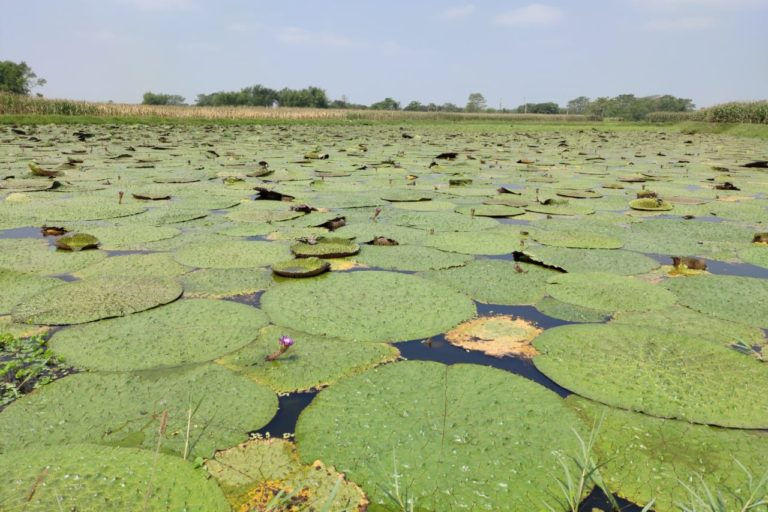Farming of Makhana (Foxnut)
- swadikaa ecommerce
- Jun 21
- 2 min read

Farming of Makhana (Foxnut)—also known as Euryale ferox—is a traditional aquatic crop mainly cultivated in the Mithila region of Bihar, India, and parts of Eastern Uttar Pradesh, Assam, and West Bengal. It grows in stagnant water bodies like ponds, wetlands, and tanks.
Here's a step-by-step guide on how Makhana farming is done:
🌿 1. Site Selection
Pond or wetland: Makhana is cultivated in shallow water (1.5 to 4 feet deep).
The water body should retain water from January to October.
Rich loamy or clayey soil at the pond bottom is ideal.
🌱 2. Land Preparation
Before sowing, the pond is cleaned of weeds and aquatic vegetation.
Organic matter like cow dung or compost is sometimes added to the pond bed.
🌾 3. Seed Sowing (January–February)
Makhana seeds are black, hard, and round.
Seeds are broadcast manually or planted in nursery plots and later transplanted.
Sowing depth: seeds are sown at 4–6 inches below the waterbed.
🌿 4. Transplantation (March–April)
After germination (20–30 days), seedlings are transplanted in pond beds at spacing of 1.5–2 meters.
Leaves begin to float on the water surface.
🌊 5. Crop Management
Water level is maintained and monitored.
Organic fertilizers (vermicompost/cow dung) may be added.
Weeds are removed periodically.
No chemical pesticide is used (Makhana is often grown organically).
🌸 6. Flowering and Fruiting (May–June)
Pink or violet flowers bloom.
After pollination, fruits develop under water, each fruit containing 15–20 seeds.
🧺 7. Harvesting (July–August)
Mature fruits sink to the pond bottom.
Farmers dive into water, collect sunken fruits by hand or use nets.
Harvested fruits are sun-dried for 2–3 days.
🔥 8. Processing
Dried fruits (gudi) are roasted in clay ovens at 300–400°C.
Then cracked manually using wooden mallets to extract white puffed kernels—this is the edible Makhana.
📦 9. Grading and Packaging
Makhana is graded based on size, color, and texture.
Packaged in airtight bags to maintain crispness and quality.
📈 Yield
Per hectare yield: 1,200–1,500 kg of raw seeds; 400–500 kg of popped makhana.
Profitable crop due to high market demand and low input cost.
🌾 Makhana Farming is Sustainable:
Grows in flood-prone areas.
Requires minimal fertilizers and no pesticides.
Environmentally friendly and suitable for organic farming.



Comments